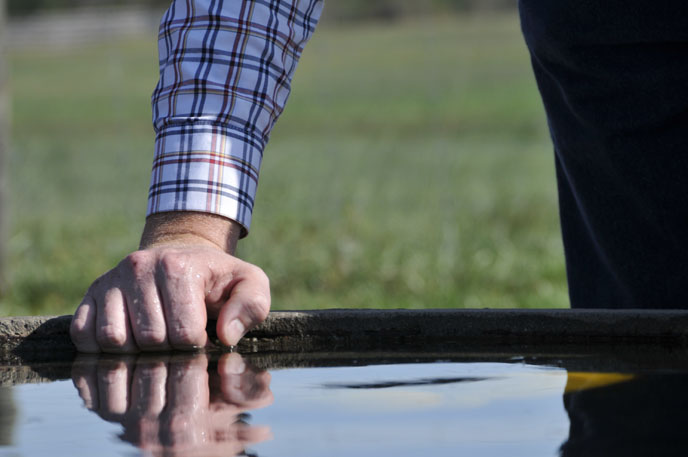Controlling Algae in Livestock Water Tanks
During the hot summer month algae can become a problem in livestock water tanks. Some species of algae can be toxic to livestock. Most are just an unsightly nuisance. There are some tactics that can be used to eliminate the problem.
Periodically cleaning the tank to reduce nutrients can slow algae growth. This is easier said than done in some cases. Most commercial tanks have a drain that allows for easy water removal. Cattlemen often recycle, reuse, and find new uses for any vessel that holds water. Old bath tubs, half of a septic tank that didn’t have quite enough concrete to complete, barge pontoons cut in half, have all found new life as water tanks on farms throughout the southeast. Removing water from these items may be difficult.
Treating tanks with products that kill algae is another option. Copper and chlorine are two good and readily available options. Copper sulfate is used as an algicide in farm ponds and can be used in watering tanks. You can find commercially available liquid copper sulfate in small bottles that are sold as stock tank cleaners. You can also by copper sulfate crystals and make your own. The chart below gives mixing instruction for dissolving copper sulfate crystals in warm water to give 1 part per million copper in a specific size water tank. Apply every 2-4 weeks as needed.

Using copper sulfate in systems with metal pipes may increase deterioration of the metal over time and some livestock, such as sheep, cannot tolerate high levels of copper. Keep added copper levels to a minimum to reduce the chance of toxicity and to maximize the life span of metal pipes.
Using unscented chlorine bleach is another option to reduce algae growth. Adding 2 to 3 oz. of chlorine bleach for each 50 gallons of water capacity to the tank each week will reduce the algae problems.
Copper sulfate or chlorine applications do not require livestock to be kept away from the tank, but best results are obtained if the active ingredient concentration is maintained for at least 5 minutes. Withholding livestock access for that amount of time may achieve better results.

Adopted from “Livestock Water Development”. Ohio State University Fact Sheet. ANR-12-02. http://ohioline.osu.edu/anr-fact/pdf/0012.pdf

I would be careful with copper as it can lead to (slow) poisoning, Chlorine may have the effect of the livestock consuming less of it (as can be seen in dogs often), and water is their most important nutrient though seldom monitored. Although I am not aware of any such products on the market I could imagine a “silver lining” with its antimicrobial properties could be a cost-effective antidote though the surface then could not just be “scrubbed” to clean. But the silver ions hardly migrate into the water, rather they act as a repellant on the surface.